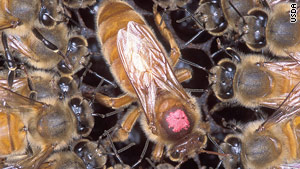
Annual Review of Entomology, volume 20, pages 399-416. National Geographic Magazine, volume 149, number 4, pages 491-501. The second strategy is requeening frequently, where the beekeeper replaces the queen of the colony, thus assuring that the queens are European Honey Bees and that mating has also occurred with European drones. This process would limit the mating possibilities between Africanized drones and European queens. The first is termed drone-flooding, which involves maintaining large numbers of common Honey Bees (originally from Europe) in areas where commercially-reared queen bees mate. Two primary solutions have been considered.

The packaged bee and queen rearing industries are in the southern United States, which would affect the honey industry across the continent.Ĭontrol:Many authorities have been working on the problem of Killer Bees in the United States. Further, beekeepers may not continue their business of honey production if faced with aggressive bees. Interbred colonies of European and Africanized honey bees may differ in pollination efforts, be more aggressive, excessively abandon the nest, and not survive the winters. Other concerns with Africanized Honey Bees are the effects on the honey industry (with an annual value of $140 million dollars) and general pollination of orchards and field crops (with an annual value of 10 billion dollars). They react to disturbances ten times faster than European Honey Bees, and will chase a person a quarter of a mile.

Since their introduction into Brazil, they have killed some 1,000 humans, with victims receiving ten times as many stings than from the European strain. They are expected to form colonies in parts of the southern United States.ĭamage done: Africanized Honey Bees (=Killer Bees) are dangerous because they attack intruders in numbers much greater than European Honey Bees. In 1990, Killer Bees reached southern Texas, appeared in Arizona in 1993, and found their way to California in 1995. They have gradually spread northward through South America, Central America, and eastern Mexico, progressing some 100 to 200 miles per year. These African bee escapees have since formed hybrid populations with European Honey Bees, both feral and from commercial hives.

In 1957, twenty-six African queens, along with swarms of European worker bees, escaped from an experimental apiary about l00 miles south of Sao Paulo. Another way to check is to analyze the specimen's DNA and enzymes.ĭistribution:In 1956, some colonies of African Honey Bees were imported into Brazil, with the idea of cross-breeding them with local populations of Honey Bees to increase honey production. To analyze the differences, a laboratory has to measure and compare some 20 different structures. SPECIES & SUBSPECIES: mellifera scutellataĭescription: The general appearance of "Killer Bees" (= Africanized Bees) is the same as common Honey Bees, but there are some distinctive physical differences between the two. Eliot Elisofon Photographic Archives, African Art.


 0 kommentar(er)
0 kommentar(er)
